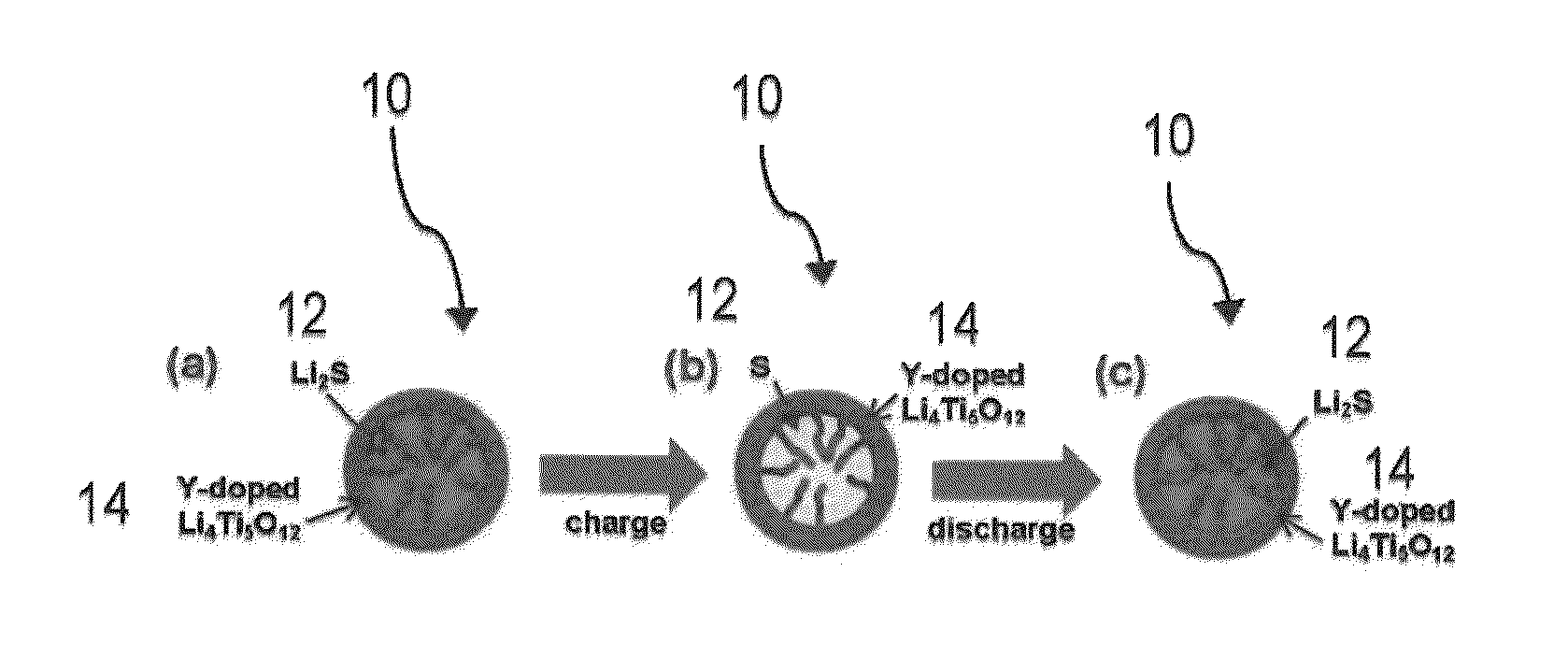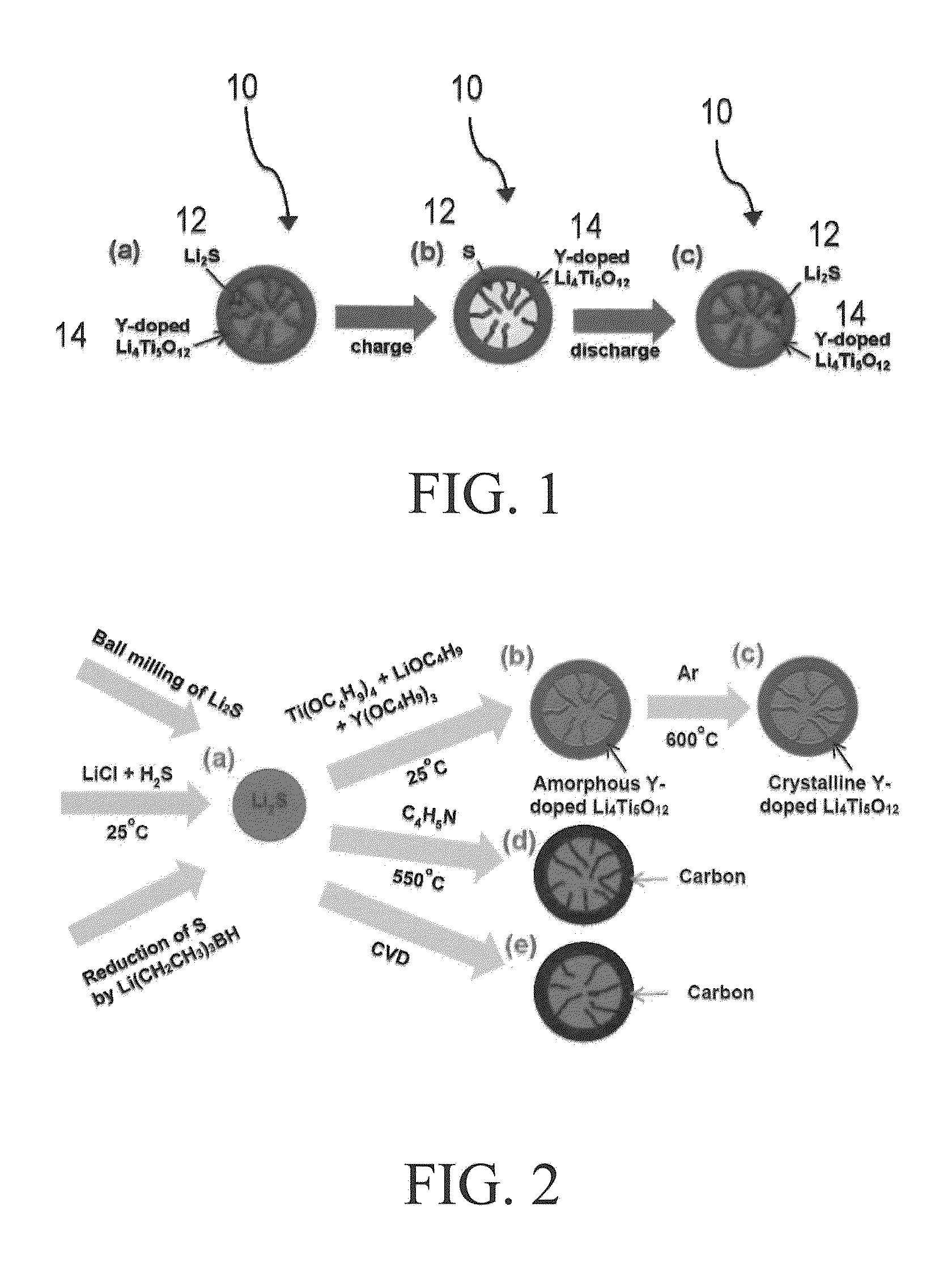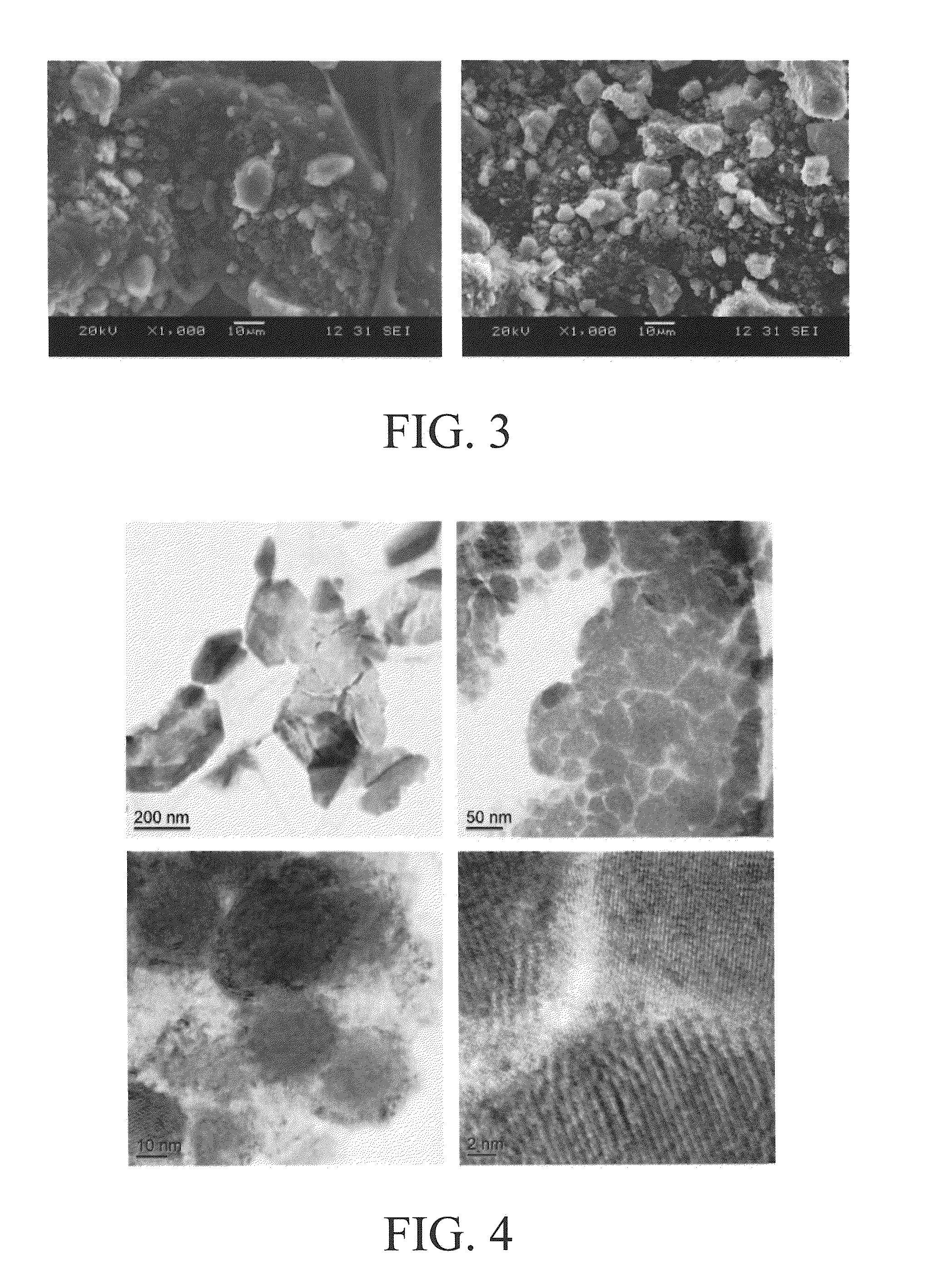ENCAPSULATED Li2S NANOPARTICLES FOR Li/S BATTERIES WITH ULTRAHIGH ENERGY DENSITIES AND LONG CYCLE LIFE
a li/s battery and nanoparticle technology, applied in the field of batteries, can solve the problems of undesired parasitic reactions, affecting the morphology of the cathode, and the charge capacity of conventional li/s batteries, and achieve the effect of rapid capacity fading of li/s batteries
- Summary
- Abstract
- Description
- Claims
- Application Information
AI Technical Summary
Benefits of technology
Problems solved by technology
Method used
Image
Examples
example 1
Formation of Li2S Nanoparticles Encapsulated with Carbon
[0072]1 gram of commercial Li2S powder was mixed with 0.075 g carbon black and high-energy ball milled for 6 hours with 20 g steel balls in a SPEX mill under an argon atmosphere. The ball milled powder mixture was then loaded into an autoclave. 0.4 ml pyrrole was added to the autoclave before being sealed inside a glove box filled with argon. The loaded autoclave was heated to 600° C. and held at that temperature for 8 hours. After the autoclave was cooled down, it was opened inside a glove box for collecting powder. FIG. 3 shows the scanning electron microscopy (SEM) images of ball milled Li2S particles with and without carbon encapsulation. As shown, the sizes of the ball milled Li2S particles are not uniform. Sizes as large as 10 μm are present together with small particles of less than 1 mm. Furthermore, the general morphology of Li2S particles before and after carbon encapsulation looks the same, indicating the carbon shel...
example 2
Electrochemical Measurements of Li2S with and without Carbon Shell Encapsulation
[0073]Ball milled Li2S powders with and without carbon encapsulation from Example 1 were used to make cathodes. More particularly, 120 mg Li2S powders with and without carbon encapsulation were mixed separately with carbon black and polyvinylidene fluoride (PVDF) with a weight ratio of 8:1:1 using a mortar and pestle, followed by adding N-methyl-2-pyrrolidinone (NMP) solvent to form a slurry. The slurry was coated onto an aluminum foil and dried at 60° C. for 12 h and then 110° C. for another 12 h.
[0074]The anode was a Li foil, whereas the electrolyte was made of a solution of lithium bis(trifluoromethanesulfonyl)imide (LiTFSI, 1 M) in 1,2-dimethoxyethane (DME) and 1,3-dioxolane (DOL) with a volume ratio of 1:1 containing LiNO3 additive (1 wt %). CR2032 coin cells were made using the aforementioned cathode, anode and electrolyte. Galvanostatic charge / discharge cycling and cyclic voltammetry were carried ...
PUM
 Login to View More
Login to View More Abstract
Description
Claims
Application Information
 Login to View More
Login to View More - R&D
- Intellectual Property
- Life Sciences
- Materials
- Tech Scout
- Unparalleled Data Quality
- Higher Quality Content
- 60% Fewer Hallucinations
Browse by: Latest US Patents, China's latest patents, Technical Efficacy Thesaurus, Application Domain, Technology Topic, Popular Technical Reports.
© 2025 PatSnap. All rights reserved.Legal|Privacy policy|Modern Slavery Act Transparency Statement|Sitemap|About US| Contact US: help@patsnap.com



